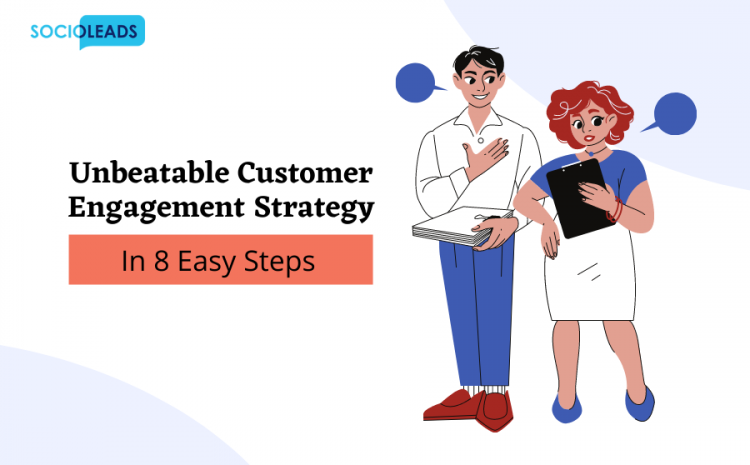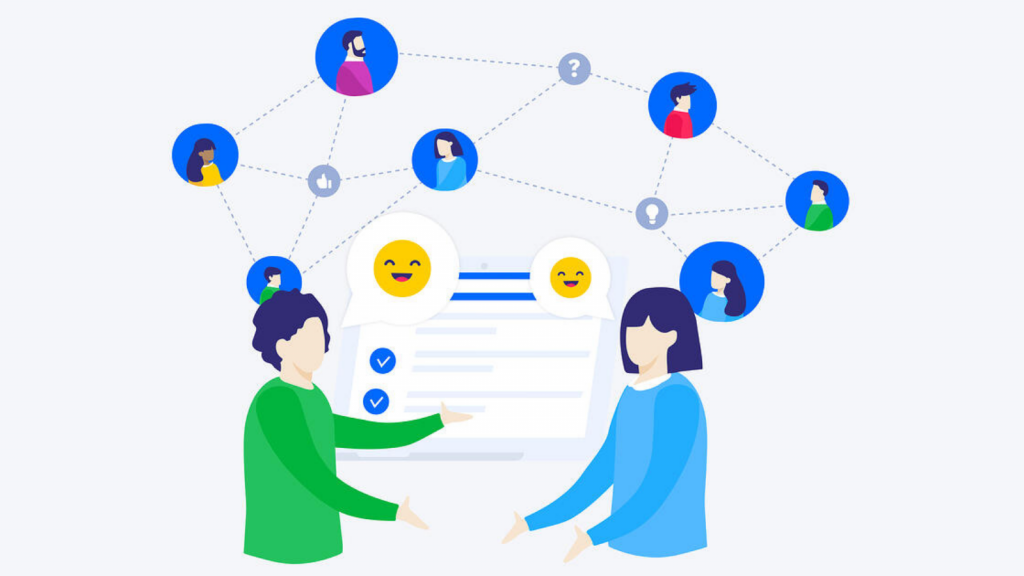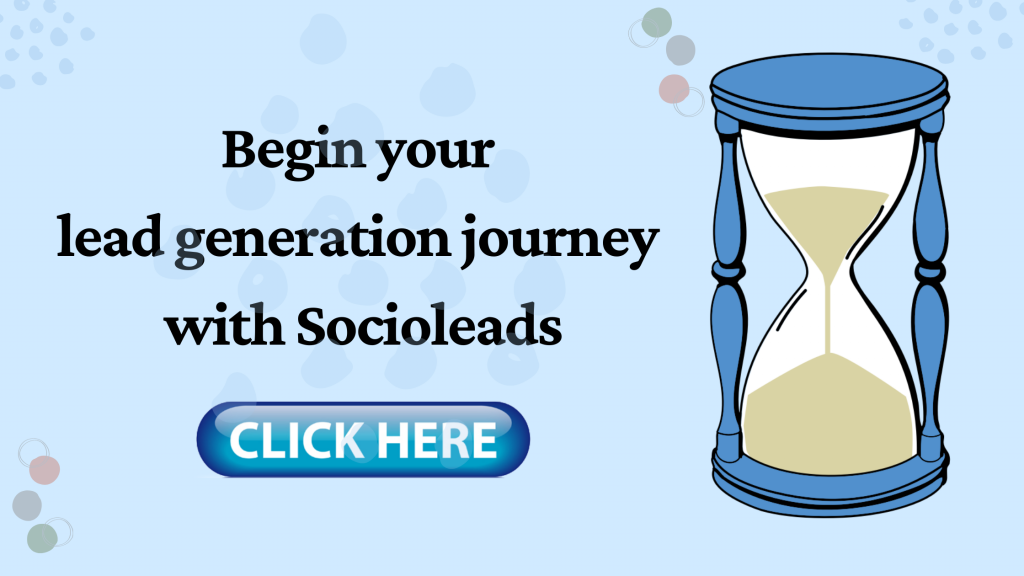How To Create An Unbeatable Customer Engagement Strategy In 08 Easy Steps
Customer engagement has been a buzzword for a while now. The internet is packed with articles about creating ‘meaningful customer engagement’. As a customer engagement platform, we have the tools you need to connect with customers and our learning resources are packed with advice on how to drive omnichannel customer engagement.
Customer engagement and conversions go hand-in-hand, but building a loyal customer base doesn’t happen overnight. There are myriad other theories that estimate the minimum number of times a customer must engage with your brand before they make a purchase: While the actual number of interactions needed is debatable, there’s no doubt that customer engagement is essential for moving prospects through your buying cycle.
Hit The Play Button To Listen To the Podcast:
But what does it really mean when we refer to ‘customer engagement’ is it as important as people say? In this article, we’re going to explore what customer engagement is, how important it is, and give you some hints and tips about engaging customers online.
What Is Customer Engagement?
Customer engagement is defined as “how a company creates a relationship with its customer base to foster brand loyalty and awareness. This can be accomplished via marketing campaigns, new content created for and posted to websites, and outreach via social media and mobile and wearable devices, among other methods.”
Although there are many variations of this definition, the premise remains the same. A company aims to foster a positive relationship with its customers to help promote its brand, generate more sales, and provide an amazing experience for its customers on a more personal level.
Why is Customer Engagement Important?
Customer engagement is one of the most important aspects of a successful company. According to studies, a customer that is totally engaged with a specific company is likely to generate 23% more revenue than a customer who feels less connected to that company. Therefore, more consumer engagement means more profits for your company, and who doesn’t want that?
If your company does not have a specific plan for improving your consumer engagement, you could be missing out on a lot of money and opportunities to interact with your valuable customers and potential customers. Building a relationship with them won’t just make more money initially, but it will help a company establish trust and loyalty with their customers as well. Having customers who trust a business will keep them around for the long term, making them repeat customers.
The correlation between customer engagement and customer loyalty are profound. A loyal customer will show their loyalty by repeatedly buying from your company, spreading the word about your business through social sharing, and referring other people like friends and family to your business and/or product.
A current customer spreading the word to other people is perhaps the most important tool in a company’s arsenal. Positively communicating with your current customers will make it much more likely they will go out of their way to help promote your business socially and through word of mouth. This communication can also help control what other people are saying about you on third-party websites.
How To Create A Customer Engagement Strategy?
A customer engagement strategy organizes interactions and activities into a streamlined plan to create the ultimate customer experience, including before and after the purchase. The process involves various communication channels to build a relationship, improve satisfaction, and proactively nurture your customer base. A successful strategy is measurable and responsive to customer needs, allowing you to collect feedback, input, and relevant customer performance data to pivot your plan accordingly.
Share Your Company’s Story, Mission, and Vision:
Stories are memorable and relatable. They give customers a reason to believe in your company. Humanize your brand with messaging that highlights your mission, vision, and story. Help customers understand your ‘why’ for the business. Be sure to incorporate your customers into your story and give them a starring role: Take the opportunity to relate, listen to their goals and frustrations, and ultimately form a shared vision.
Create Great Customer Experiences:
If you need proof that customer experience is essential to consumer engagement, here it is: among companies who work to improve their customer experience, 84% report increased revenue.
It makes a lot of sense, really. We’ve all had bad experiences with companies which made us swear never to return! Waiting too long on hold to speak to a service rep, online checkout that was too complicated or (even worse!) a transaction that didn’t go through after entering all the information, reading a Tweet that was tone-deaf – all these things are examples of bad user engagement.
So how about creating some good ones?
Making sure to deliver great customer experiences means first mapping out all the ways you interact with customers. Whether in a brick-and-mortar store, website, social media pages, emails, customer support center, and/or anything else, do a thorough analysis of each and see where you can improve.
Implement a Chatbot:
If you implement an AI-powered chatbot that analyzes data and can speak to users, it’s easy to program it to make recommendations to site visitors — or help them choose the products they like. That’s one of the smarter customer engagement strategies because it feels natural — chatbots will work based on what the user needs.
Chatbots can also use “triggers” to send relevant messages based on criteria such as location, time on page, or the number of pages viewed.
Another benefit of chatbots when it comes to customer engagement is that they help you offer smooth service even after hours. This means that, even when human agents aren’t around, you don’t lose the chance to grab the attention of customers, collect contact details so humans can reach out later, or just handle routine questions faster.
Make Your Brand Relatable and Meaningful:
Successful customer engagement isn’t just about making the user experience smooth and efficient (although that’s a huge part of it). It’s also about creating a brand personality that customers will love getting to know and want to engage with.
This is where brand awareness comes into the picture. Before engaging with a brand, the customer has to be aware that it exists and that it has something special, relevant or useful to offer.
Take a Social Approach:
Sites like Twitter, Facebook, and Instagram have become platforms for people looking to express their concerns with a business or share their praise. Either way, these tools give you direct access to your customer’s raw thoughts and feelings. Respond to comments, repost user content, show support for a cause, and provide helpful resources to nurture an even deeper relationship with customers.
Provide Free Benefits to Users:
Reward users for being loyal customers by giving away something for free: not ink pens or water bottles, but things that your customers actually need. Offer them free information on how to get the most out of your product or a resource on cost/benefit analysis. Free benefits are also a way to attract new customers. Give leads a taste of what you have to offer without giving away the whole farm. If your customers are new business owners, a free webinar on planning and resource management might pique their interest, or if they work in the manufacturing industry, consider providing a white paper on new industry regulations.
Practice Active Listening:
Customers are very vocal about what they want, so listen. What are they saying and not saying about your business? How do they compare you to your competitors? Make it easy for customers to provide feedback, share their experiences, record responses, and follow up. A timely follow-up communicates to your audience that you’ve heard what they said, and you’re committed to improving the customer experience. When confronted with unfavorable feedback, be sure to listen to solve the problem, not just calm the customer down.
Take Advantage of Conversational Marketing:
Digital marketing is becoming more sophisticated, and so are the expectations of customers. The concept of a 9-5 store is not relevant anymore. Customers want and expect to connect with brands and companies whenever and wherever it suits them. If a customer buys an item online at midnight, and a problem occurs with the payment process, they want to have it dealt with as soon as possible.
Of course, some companies can’t necessarily provide that level of engagement at every moment of the day (and night), and that’s where conversational marketing tools, like chatbots, can be a huge help.
Check Out Our Latest Posts:
Manage Ads Better in 2022 with Facebook Manager
7 Reasons To Implement Powerful Automated Engagement Marketing
The Facebook Pixel Helper Guide for 2022
Take Away:
Customer engagement is one of the most important metrics for achieving customer success. In the digital era, where the customers have information and details at their fingertips, companies need to integrate a smart technology that can retrofit their old methods of customer interaction. Research shows that “customers who get an engaging and a positive customer experience are more likely to stay with the company. As you pursue this process in the long term though, everything will start falling into place — and customer engagement will drive massive business value.











Write a Comment